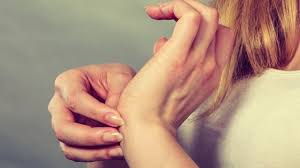Decoding the Mystical Itch: What Does it Mean When Your Left Palm Itches?

In the realm of superstitions and folk beliefs, the human body often serves as a canvas for interpreting signs and omens. One such intriguing phenomenon is the itching of the left palm, a sensation that, according to popular wisdom, carries significant meaning. This article delves into the origins, cultural variations, scientific perspectives, and psychological underpinnings behind the belief that an itchy left palm portends certain outcomes or messages. Through an exploration of diverse cultural lenses and scientific explanations, we seek to unravel the mystery and symbolism attributed to this curious sensation.
Introduction
The human body has long been regarded as a conduit for expressing and receiving metaphysical messages. Itching, in particular, has been assigned various meanings across different cultures and contexts. Among these interpretations, the itching of the left palm stands out as a widely recognized superstition, intriguing believers and skeptics alike. While modern science offers explanations rooted in neurology and dermatology, cultural traditions continue to uphold the belief in left palm itching as a sign with potential implications for one’s financial future or personal relationships.
Historical and Cultural Perspectives
To understand the significance of left palm itching, we must first trace its roots through history and across cultures. Ancient civilizations such as those in Egypt, Greece, and Rome attached great importance to bodily sensations and their supposed connections to supernatural forces. In these societies, itching was often seen as a precursor to events or as messages from the gods. The left hand, specifically, held various symbolic meanings, including notions of luck, prosperity, and personal destiny.
In Chinese culture, where superstitions and beliefs are deeply ingrained, the left palm itching is thought to signify that money is on its way. This belief is closely tied to the concept of qi (energy flow) and the interconnectedness of physical sensations with financial fortune. Similar interpretations can be found in Indian folklore and other Asian cultures, where left palm itching is considered a harbinger of financial gain or unexpected windfalls.
Across Europe and the Americas, interpretations vary but often include themes of financial gain or loss, depending on whether the left palm itches. In some regions, itchy palms are also linked to upcoming visitors or the arrival of important news, adding layers of complexity to the superstition.
Scientific Explanations
From a scientific standpoint, itching—whether on the left palm or elsewhere—is primarily attributed to dermatological causes or neurological stimuli. Dermatologically, itching can be triggered by dry skin, allergies, irritants, or even psychological factors such as stress or anxiety. Neurologically, the sensation of itching is mediated by nerve fibers that transmit signals to the brain, where they are interpreted as an urge to scratch.
Specifically addressing left palm itching, dermatologists often point to environmental factors or localized skin conditions as likely causes. Factors such as temperature changes, humidity levels, and exposure to irritants can all contribute to the sensation of itching. Furthermore, individual differences in skin sensitivity and nerve response can amplify or mitigate the intensity of itching sensations.
Psychological and Cultural Implications
Beyond its physiological roots, the belief in left palm itching holds significant psychological and cultural implications. Psychologically, superstitions such as this can provide comfort or a sense of control in uncertain situations. By attributing meaning to bodily sensations, individuals may feel empowered to anticipate or influence future events, however irrational the belief may appear to others.
Culturally, superstitions surrounding left palm itching serve as a shared narrative that reinforces social bonds and traditions. Whether through familial teachings, communal folklore, or popular media, these beliefs shape collective perceptions and behaviors. They also highlight the enduring influence of cultural heritage on individual beliefs and practices.
Interpreting the Signs: Modern Applications
In contemporary society, the interpretation of left palm itching continues to evolve alongside scientific advancements and changing cultural norms. While some individuals dismiss superstitions as outdated or unscientific, others maintain a nuanced perspective that integrates both rational inquiry and cultural understanding.
For instance, holistic health practices often incorporate elements of mind-body connection, acknowledging the role of psychological factors in physical well-being. Within this framework, sensations such as itching may be viewed as manifestations of underlying emotions or energetic imbalances, rather than purely random occurrences.
Similarly, the practice of mindfulness encourages individuals to observe bodily sensations without judgment, fostering a deeper awareness of how thoughts and emotions can influence physical experiences. By cultivating mindfulness, individuals may develop a heightened sensitivity to their bodies’ signals while also maintaining a critical perspective on the origins and implications of superstitions like left palm itching.
Conclusion
The phenomenon of left palm itching exemplifies the intricate interplay between cultural traditions, scientific inquiry, and individual beliefs. While its origins may lie in ancient superstitions and mythologies, contemporary interpretations reflect a complex blend of historical legacy, psychological insight, and medical knowledge. Whether perceived as a harbinger of financial fortune, a symptom of dermatological sensitivity, or a cultural artifact, the itching of the left palm continues to intrigue and inspire curiosity.
Ultimately, the significance of left palm itching resides not only in its potential predictive power but also in its capacity to provoke contemplation about the intersection of belief, science, and human experience. As we navigate the complexities of interpretation, it is perhaps in our willingness to embrace diverse perspectives and interrogate inherited wisdom that we uncover the true meaning behind this age-old sensation.
In exploring the multifaceted nature of left palm itching, we uncover not only the mysteries of the human body but also the enduring allure of belief systems that shape our understanding of the world around us. Whether viewed through the lens of tradition, science, or personal reflection, the itch of the left palm invites us to ponder the intricate tapestry of meaning that connects past, present, and future.
3.5





